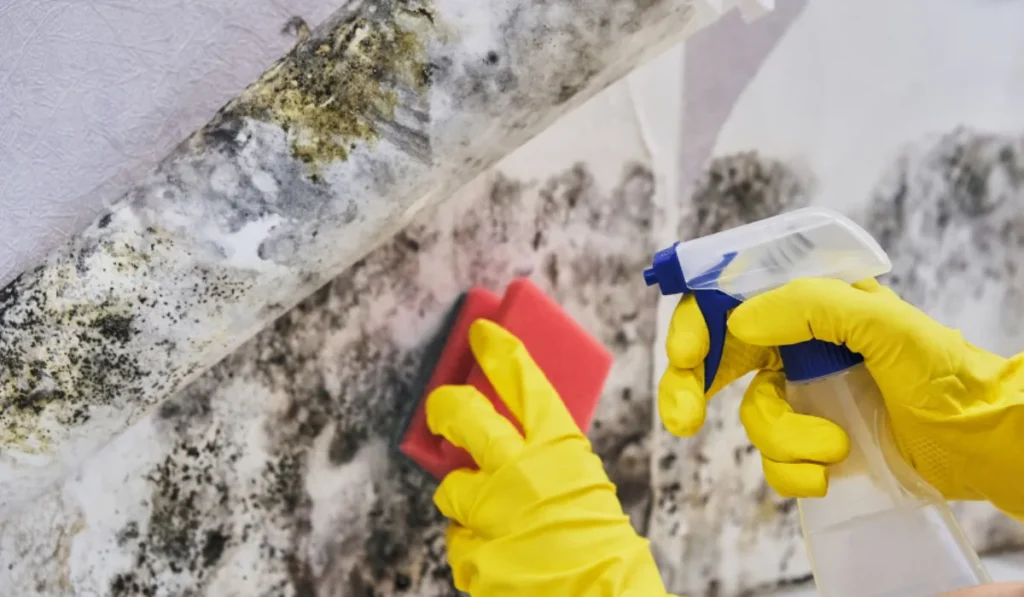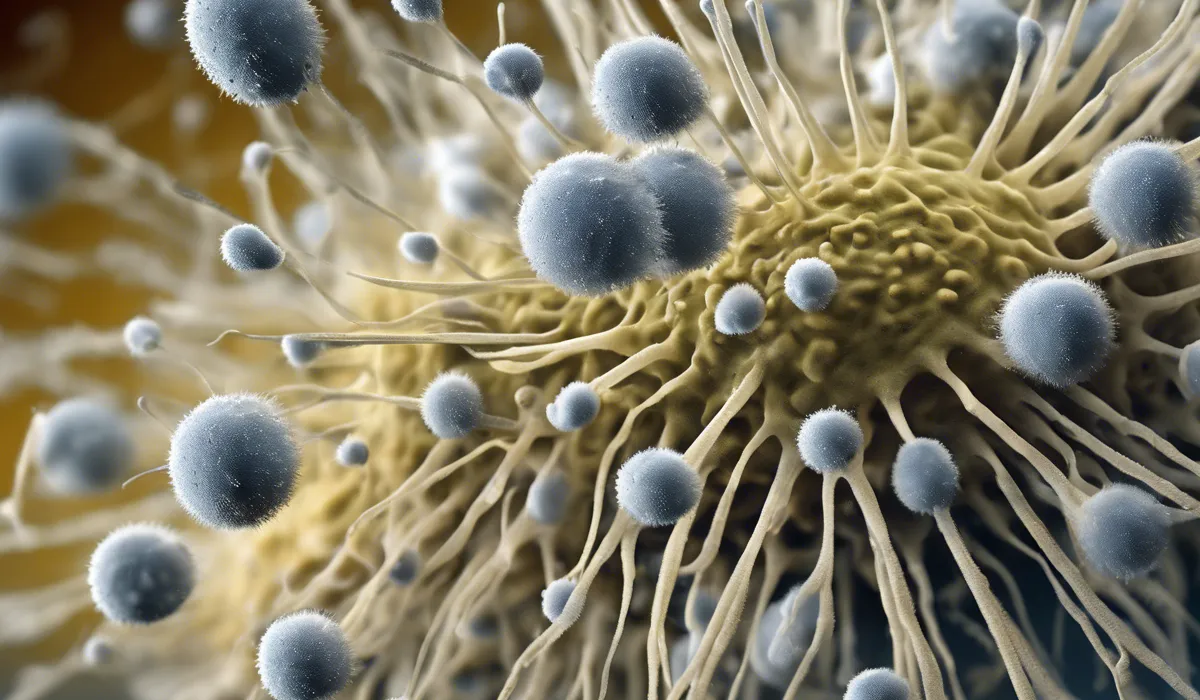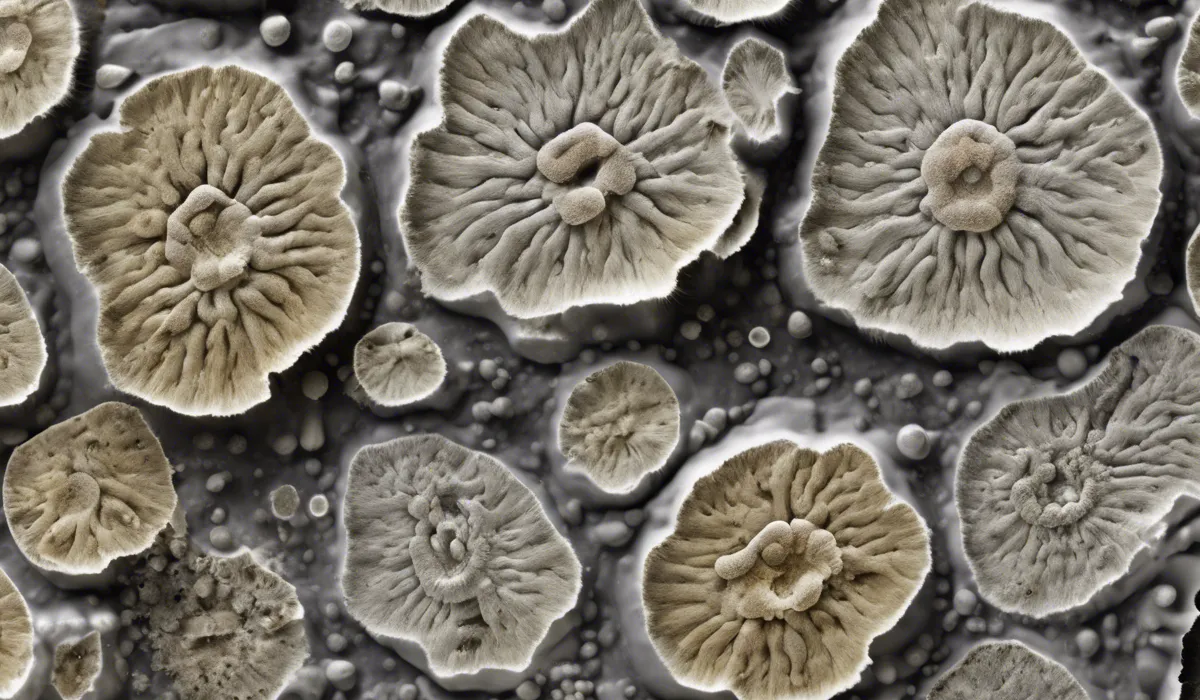Mold spores spread through air currents, human and animal movement, and on objects. They can attach to clothing, fur, and be carried by wind or ventilation systems. Moist environments facilitate their growth when they land on suitable surfaces.
Understanding Mold Spores and Their Nature

Definition of Mold Spores
Mold spores are tiny, lightweight particles that are the reproductive units of fungi. They are ubiquitous in the environment and can be found almost everywhere, both indoors and outdoors.
These spores are so small that they are invisible to the naked eye, requiring a microscope to be seen. Mold spores play an essential role in the propagation of mold as they can develop into new mold colonies when they find the right conditions.
The Lifecycle of Mold
The lifecycle of mold begins with spore dispersal. When mold spores land on a suitable surface and environmental conditions are favorable, they germinate and grow into new mold colonies.
Mold thrives, reproducing by creating more spores which then spread to continue the cycle. When conditions are not suitable for growth, mold spores can enter a dormant state, waiting for the right conditions to activate.
Conditions Favoring Mold Spore Proliferation
Mold spores require moisture, warmth, and a food source to proliferate. They commonly grow on organic materials like wood, paper, or fabrics.
Areas with high humidity levels or those that have experienced water damage are particularly susceptible to mold growth. The absence of sunlight and poor air circulation can also contribute to a favorable environment for mold spores.
Mechanisms of Mold Spore Dispersion

Air Currents and Ventilation Systems
Air currents, whether natural or from ventilation systems, are one of the most common ways mold spores spread.
When air moves over a mold colony, it can easily pick up spores and transport them to new locations.
Additionally, heating, ventilation, and air conditioning systems can distribute mold spores throughout a building, especially if the systems are not well-maintained.
Physical Disturbances and Human Activities
Everyday activities such as walking, cleaning, or moving objects can disturb mold colonies and cause spores to become airborne.
Once in the air, these spores can spread throughout a space. Improper handling of moldy materials can exacerbate the problem, leading to widespread contamination.
Water Transport and Moisture Movement
Water leaks, flooding, and high humidity can all facilitate the movement of mold spores. They can hitch a ride on water droplets or be carried by moisture in the air, spreading to new areas where they can potentially grow into new colonies.
Attachment to Animals, Insects, and Humans
Mold spores can also adhere to animals, insects, and humans, effectively using them as carriers. The spores can attach to clothing, fur, or even shoes and be transported to entirely different environments, spreading the reach of mold colonies.
Preventing and Controlling the Spread of Mold Spores

Reducing Humidity and Moisture Levels Indoors
Controlling indoor humidity is crucial for mold prevention. Using dehumidifiers can help maintain a dryer environment that is less conducive to mold growth.
Fixing leaks and ensuring good ventilation in areas like bathrooms and kitchens can also help reduce moisture levels.
Proper Cleaning and Maintenance Routines
Regular cleaning and maintenance are essential to prevent mold spores from settling and growing.
This includes cleaning up spills immediately, using mold-resistant products, and ensuring that areas prone to moisture are kept dry and clean. Additionally, inspecting the home regularly for signs of mold can help catch and address problems early.
Use of Air Filtration and Purification Systems
Air filtration systems can capture mold spores from the air, reducing their spread. High-efficiency particulate air (HEPA) filters are particularly effective at trapping spores and other allergens.
Air purifiers with HEPA filters can be used in areas where mold spore levels are a concern.
Strategies for Mold Remediation and Professional Interventions
When mold contamination is significant, professional remediation may be necessary. Professionals have the expertise and equipment to safely remove mold and prevent its return.
They can also identify the sources of moisture that are contributing to mold growth and recommend solutions to address them.
Understanding how mold spores spread and taking proactive measures to control their dispersion can significantly reduce the risk of mold-related health issues and property damage.
Regular vigilance and maintenance are key to keeping indoor environments healthy and mold-free.
FAQs About Mold Spore Spread
How do mold spores typically spread through the air?
Mold spores spread through the air via air currents, ventilation systems, and wind.
Can mold spores be spread by humans and animals?
Yes, mold spores can attach to clothing and fur, spreading as humans and animals move.
Are mold spores capable of attaching to objects?
Yes, mold spores can attach to various objects, which can then be transported to new locations.
What kind of environments facilitate mold spore growth?
Moist environments facilitate mold spore growth when they land on suitable surfaces.
How does ventilation affect mold spore distribution?
Ventilation systems can carry mold spores, spreading them to different areas within a building.
Final Thoughts
Mold spores disseminate via air currents, and are transported by animals, humans, and on inanimate objects.
They readily cling to materials like clothing and fur, and can be distributed by wind or mechanical ventilation systems. Once deposited in a suitably moist environment, these spores can thrive, colonizing new surfaces.
